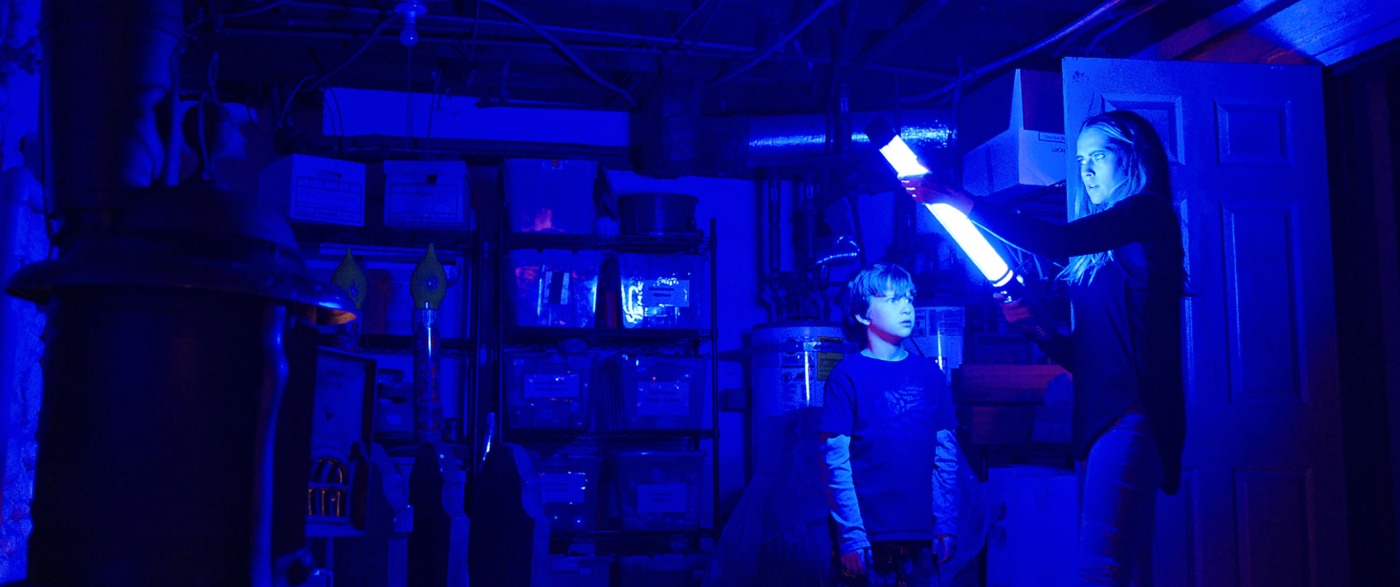Last Night I Watched: ‘Lights Out’
As Halloween approaches, it seems only fitting to talk about a horror movie that I find simultaneously chilling and inspiring. While this description seems somewhat paradoxical, it is my hope that you understand my reasoning for this curious choice of words as the piece progresses.
Lights Out is a horror film directed by David F. Sandberg, released in cinemas in 2016. It depicts the story of a dysfunctional family looking to rid themselves of an entity that is only visible when the lights are turned off. This original concept was the brainchild of the director, first realised in his award-winning short film of the same name.
In fact, this film should give hope to all aspiring filmmakers. Horror legend James Wan and financing company New Line Cinema gave Sandberg the opportunity to bring a feature length vision of his short film to life for $5 million. A meagre sum in modern day Hollywood, but coming from a visual effects and animation background, along with his DIY experience, Sandberg stretches out this budget to create a satisfying horror experience.
The original idea leads to a number of interesting visuals and Sandberg ultimately delivers on the promise of the premise. The film is a tight 81-minute package, paced briskly, but never so fast that the audience is unaware of the significance of the events unfolding on screen.
Each scene feels meticulously edited for maximum effect, keeping momentum through expositional conversations
This shortened runtime only further adds to the expertly crafted feeling of dread and claustrophobia that is impressively maintained throughout. Each scene feels meticulously edited for maximum effect, keeping momentum through expositional conversations whilst looking to draw out tense moments for an almost excruciating period.
However, even Sandberg has admitted to an overreliance on jump scares. When utilised sparingly, jump scares undoubtedly illicit a shock from the audience. Yet leaning on them as a cinematic crutch can lead to an interruption of the flow of a film, even promoting a sense of predictability as audiences begin to see the pattern if used without restraint. It is undoubtedly true that jump scares are used here, but in a far less egregious manner than most.
Perhaps I am more forgiving of the reliance on jump scares because, unlike many recent horror ventures, I was surprisingly invested in the protagonists.
Unfortunately, an increasingly common trope associated with recent horror movies is that the characters are written in a flat, one-dimensional manner. If this is the case, the movie is less likely to resonate with audiences. This seems like it should go without saying, but it is an aspect of filmmaking that many studio-driven horror movies have seemed to sacrifice in return for cheap thrills. Yet here, in a surprising twist, the characters form the heart of the movie.
Against all odds, the complicated relationship between the mother and grown-up daughter provides ample dramatic tension and adds an extra element to the story as we head into the third act of the film. The dialogue is believable and natural, rarely feeling stilted, and exposition is held at a necessary minimum, keeping the audience engaged throughout.
It is, however, not a perfect film. Its screenplay is effective, but undoubtedly simple when compared to the modern ethereal horror of Ari Aster and Jordan Peele. The simplicity is both a strength and a weakness here. The simple premise can promote a focus on scares and imagery yet does so at the expense of a more compelling and complex narrative.
In this regard, Lights Out harkens back to a time of simple horror, exuberating a similar energy to cult classics such as The Evil Dead, also a directorial debut from juggernaut director Sam Raimi, who went on to direct the Spider-Man trilogy. Both directors come from a DIY background, with Sandberg uploading early short films made with his wife using household items to YouTube and Raimi leaving school to gather sufficient funds to realise his own unwaveringly strong artistic vision.
It is these directors that seem to produce the most exciting new content, with the power of their passion inevitably resulting in a movie bursting at the seams with low-budget heart and charm.
It is clear then that Swedish-born Sandberg is still perfecting the process of large-scale filmmaking. He has since talked of the struggles of making his first feature length film in multiple interviews on his YouTube channel, engaging with fans and amateur filmmakers alike and providing useful behind-the-scenes tips.
His interviews are refreshingly honest and raw surrounding the brutality of the moviemaking process, providing a fresh peek behind the Hollywood curtain, but his love for the craft is apparent throughout. Since this film, he has gone on to make Annabelle: Creation and, most notably, SHAZAM!, a critical success that also focussed heavily on the characterisation of the protagonists over grand spectacle.
What this film should show us is that modern day Hollywood needs to look for more fresh voices, to diverge from the established chorus
Ultimately, what this film should show us is that modern day Hollywood needs to look for more fresh voices, to diverge from the established chorus. The directors that chased a fantasy and willed it into reality based on sheer passion and excitement towards their craft. So, whilst the film is undoubtedly well crafted and chilling in parts, it also provides hope for those looking for fresh, original concepts stemming from modern horror.

Comments